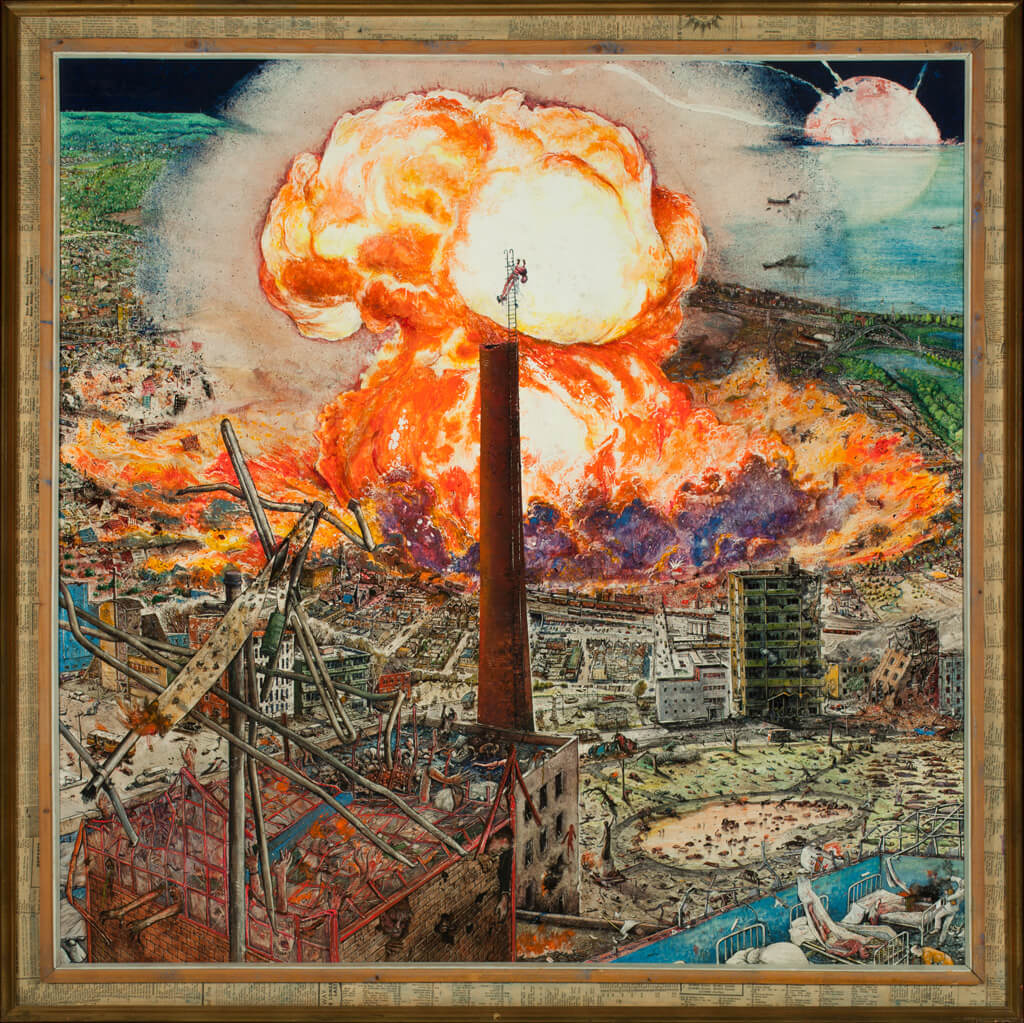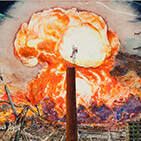This Is the Nemesis 1965

William Kurelek, This Is the Nemesis, 1965
Mixed media on Masonite, 114.8 x 115.6 cm
Art Gallery of Hamilton

This Is the Nemesis was part of Kurelek’s second series of moral message works, Glory to Man in the Highest. Billed as a “socio-religious satire,” the twenty paintings explore a scattershot of themes, from urban crime to scientific advancement, from economic disparity to the secularization of religious holidays. The scene imagines the fictional destruction of Hamilton, Ontario, by a nuclear bomb. Atomic conflagration dominates the painting, dragging the viewer headlong into a fully enacted orgy of death. Another cloud of cataclysmic energy billowing on the distant horizon announces Toronto’s shared fate. The painting’s frame is a collage of the television schedule published in the Globe and Mail.
This and the other works in the series were first exhibited at Isaacs Gallery in Toronto in 1966. The imagery found in the paintings, their titles, and the artist’s notes accompanying the exhibition give voice to the influence of the conservative English Roman Catholic theologian Edward Holloway. This Is the Nemesis is a visual elaboration of the moralizing and apocalyptic tone of Holloway, whose 1969 book Catholicism: A New Synthesis includes chapter titles such as “Whom do you say Man is?” and “Nemesis.”
The series shocked and polarized critics. Kay Kritzwiser praised Kurelek’s indictment of consumerism, while Harry Malcolmson compared the exhibition to “a fire and brimstone sermon exhorting us to right conduct,” adding: “Kurelek says his new work is satirical, but satire generally implies making a point by indirection. There is about as much indirection in Kurelek’s sledgehammer attack as in the Ten Commandments.”
While unsympathetic, Malcolmson’s review underlines the depth of Kurelek’s artistic achievement. Although religious vehemence would have disqualified a lesser artist from serious consideration by the largely secular art world, it confirmed his sincerity and creative singularity. People could disagree with Kurelek, but they remained captivated by his painting.

 About the Author
About the Author
 More Online Art Books
More Online Art Books
 Acknowledgements
Acknowledgements